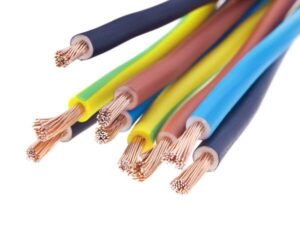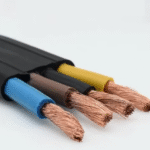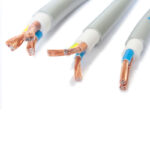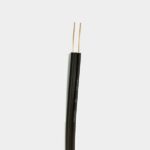When you flip a switch, charge your phone, or turn on a machine, electricity flows silently through a network of cables behind the scenes. But what exactly is an electric cable, and how does it work?

what is electric cable
Whether you're a homeowner, electrician, or just curious, this guide will help you understand the basics of electric cables—what they are, how they're built, and where they're used.
🔌 Definition: What Is an Electric Cable?
An electric cable (or electrical cable) is a bundle of conductors—usually made of copper or aluminum—designed to carry electrical current from one point to another. It is typically insulated to protect against electric shocks, short circuits, and environmental damage.
Electric cables come in many types, sizes, and ratings, depending on their application—residential, industrial, commercial, or specialized use.
🧱 Basic Construction of Electric Cable
Most electric cables have three main components:
| Part | Function |
|---|---|
| Conductor | The metal wire (usually copper or aluminum) that carries electricity |
| Insulation | A layer of non-conductive material (PVC, XLPE, etc.) that prevents current leakage and protects users |
| Sheath (optional) | An outer jacket that offers mechanical protection, UV resistance, flame resistance, and more |
Some cables also have shielding, armor, or filler layers, depending on their intended environment and safety requirements.
⚡ Types of Electric Cables
There are many kinds of electric cables based on voltage, flexibility, insulation, and use case. Common types include:
Power Cables: Used for transmitting electricity in buildings, power plants, and substations
Control Cables: For sending control signals to machines and devices
Coaxial Cables: Used in TV and data transmission (e.g., CATV cable)
Flexible Cables: Designed for portable or moving equipment
Armoured Cables: Reinforced with steel tape or wire for underground or outdoor installations
Single-Core / Multi-Core Cables: Refers to the number of conductors inside the cable
🧰 Where Are Electric Cables Used?
Electric cables are used in nearly every part of modern life. Some common applications include:
Residential and commercial wiring
Industrial machines and automation systems
Power transmission and distribution
Renewable energy systems (solar, wind)
Control panels and instrumentation
Automotive and marine wiring
Telecommunications and broadcasting
🔍 Electric Cable vs Electric Wire
Are electric cables and electric wires the same thing? Not exactly:
Wire: Typically a single conductor, either solid or stranded
Cable: A group of conductors bundled together and insulated
So, all cables contain wires, but not all wires are cables.
✅ Summary
An electric cable is an essential component in any electrical system. It ensures safe and efficient transmission of electricity, whether in your home, an office building, or a heavy industrial site.
Understanding the types, structure, and uses of electric cables helps you choose the right cable for your application—whether you're rewiring a motor, installing solar panels, or building a control system.
📞 Need Help Choosing the Right Electric Cable?
TOT Wire & Cable supplies a wide range of certified electric cables at competitive prices—backed by expert support and fast delivery.
👉 Contact us today to find the right cable for your needs.





